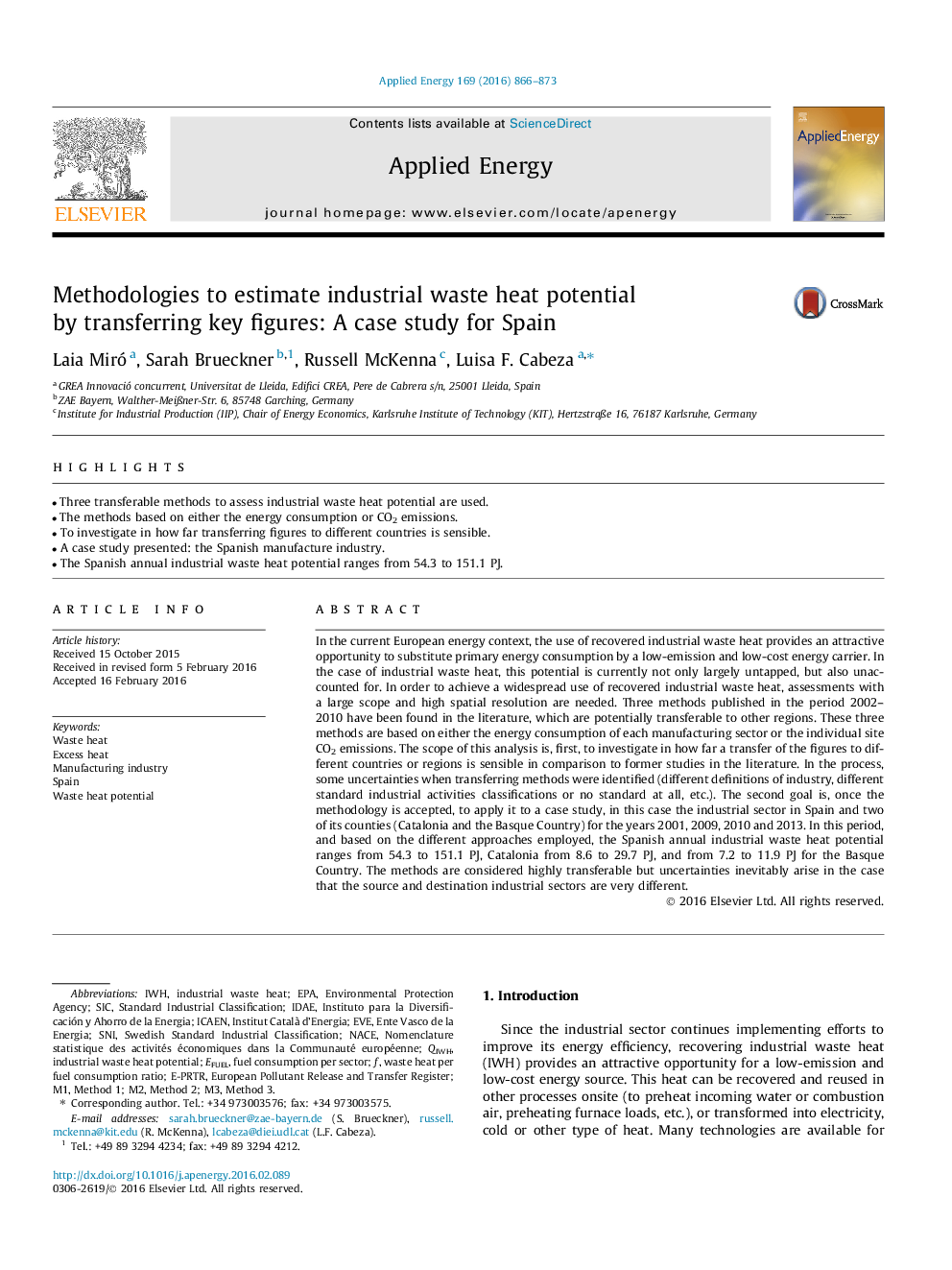| Article ID | Journal | Published Year | Pages | File Type |
|---|---|---|---|---|
| 6683656 | Applied Energy | 2016 | 8 Pages |
Abstract
In the current European energy context, the use of recovered industrial waste heat provides an attractive opportunity to substitute primary energy consumption by a low-emission and low-cost energy carrier. In the case of industrial waste heat, this potential is currently not only largely untapped, but also unaccounted for. In order to achieve a widespread use of recovered industrial waste heat, assessments with a large scope and high spatial resolution are needed. Three methods published in the period 2002-2010 have been found in the literature, which are potentially transferable to other regions. These three methods are based on either the energy consumption of each manufacturing sector or the individual site CO2 emissions. The scope of this analysis is, first, to investigate in how far a transfer of the figures to different countries or regions is sensible in comparison to former studies in the literature. In the process, some uncertainties when transferring methods were identified (different definitions of industry, different standard industrial activities classifications or no standard at all, etc.). The second goal is, once the methodology is accepted, to apply it to a case study, in this case the industrial sector in Spain and two of its counties (Catalonia and the Basque Country) for the years 2001, 2009, 2010 and 2013. In this period, and based on the different approaches employed, the Spanish annual industrial waste heat potential ranges from 54.3 to 151.1 PJ, Catalonia from 8.6 to 29.7 PJ, and from 7.2 to 11.9 PJ for the Basque Country. The methods are considered highly transferable but uncertainties inevitably arise in the case that the source and destination industrial sectors are very different.
Keywords
Related Topics
Physical Sciences and Engineering
Energy
Energy Engineering and Power Technology
Authors
Laia Miró, Sarah Brueckner, Russell McKenna, Luisa F. Cabeza,
